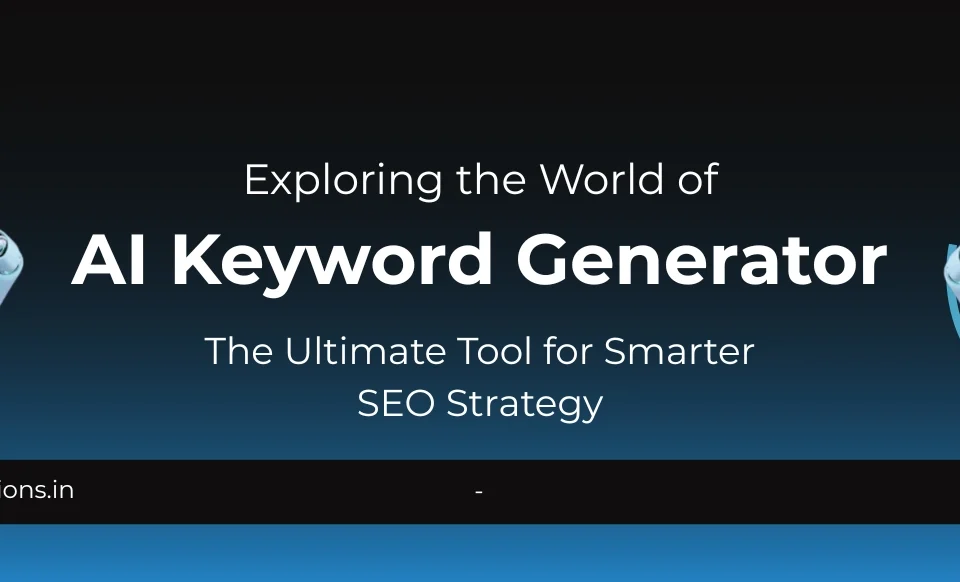What is Agent Factory: Top 5 Agent Observability Best Practices

Image Editing in Gemini Has Recently Gotten a Major Upgrade
August 27, 2025
Top 10 Features That Are Needed in NBFC Loan Management Software
September 4, 2025Agent Factory represents a powerful framework for developing intelligent AI systems that can operate autonomously in complex environments. This innovative approach allows developers to create agents capable of handling tasks ranging from data analysis to customer interactions. As businesses increasingly adopt AI-driven solutions, understanding how to build and monitor these agents becomes crucial for success.
In today’s fast-paced digital landscape, AI agents are transforming industries by automating processes and making decisions with minimal human intervention. However, ensuring these agents perform reliably requires more than just initial setup. That’s where observability comes into play, providing insights into agent behavior, performance, and potential issues. This article delves into the essentials of Agent Factory while highlighting five critical best practices for maintaining observability. By implementing these strategies, teams can enhance efficiency, reduce downtime, and foster innovation in their AI deployments.
Understanding the Core of Agent Factory
At its heart, Agent Factory serves as a blueprint for constructing AI agents that interact with tools, data sources, and users seamlessly. Drawing from advancements in generative AI and machine learning, it emphasizes modular design, where agents can be customized for specific use cases. For instance, in e-commerce, an agent might manage inventory by predicting demand patterns, while in healthcare, it could assist in patient data analysis.
The concept has gained traction through various implementations, including open-source tools and enterprise platforms. Developers appreciate its flexibility, which supports integration with existing systems like cloud services or APIs. Unlike traditional software, Agent Factory focuses on agentic behaviors—meaning agents can plan, reason, and adapt based on real-time inputs. This shift from static scripts to dynamic entities marks a significant evolution in AI development.
Key components include agent creation pipelines, where predefined templates accelerate prototyping. Teams can experiment with different configurations, testing how agents respond to scenarios. Security features are often built-in, ensuring compliance with data privacy regulations. As adoption grows, Agent Factory is poised to become a standard for scalable AI solutions, empowering organizations to tackle challenges that were once deemed too complex.
Why Observability Matters for AI Agents
Observability goes beyond basic monitoring; it provides a comprehensive view of an AI agent’s internal state and external interactions. In the context of Agent Factory, where agents handle multifaceted tasks, observability ensures transparency and accountability. Without it, diagnosing failures or optimizing performance becomes a guessing game, leading to inefficiencies and lost opportunities.
Imagine an agent designed for customer support that suddenly starts providing inaccurate responses. Observability tools can trace the issue back to a faulty data source or an unexpected model drift. This proactive approach helps maintain trust in AI systems, especially in regulated sectors like finance or healthcare. Moreover, it aligns with broader IT practices, integrating logs, metrics, and traces to paint a full picture.
As AI agents become more autonomous, the need for robust observability intensifies. It enables teams to measure key performance indicators, such as response time and error rates, while identifying bottlenecks. Ultimately, strong observability practices contribute to resilient AI ecosystems, where agents evolve alongside business needs.
Implement Comprehensive Logging Mechanisms
One of the foundational steps in agent observability is establishing detailed logging. This involves capturing every significant event, from input processing to decision-making outputs. In Agent Factory setups, logs should include timestamps, agent identifiers, and contextual data to facilitate quick troubleshooting.
Start by categorizing logs into levels like info, warning, and error. For example, an info log might record a successful tool invocation, while an error log details a failed API call. Use structured formats such as JSON to make logs searchable and analyzable. Integrating with centralized platforms allows teams to aggregate data from multiple agents, spotting patterns across deployments.
To enhance this practice, incorporate user feedback loops. After an agent completes a task, log user satisfaction ratings or corrections. This not only improves observability but also feeds into iterative enhancements. Regularly review log volumes to avoid overload, implementing retention policies that balance storage costs with compliance requirements. By prioritizing logging, organizations can turn raw data into actionable insights, ensuring agents operate smoothly.
Leverage Metrics for Performance Tracking
Metrics provide quantifiable measures of an agent’s health and efficiency, forming a critical pillar of observability. In Agent Factory environments, focus on metrics like latency, throughput, and success rates. These indicators reveal how well agents handle workloads under varying conditions.
Set up dashboards that visualize metrics in real-time, using tools that support custom queries. For instance, track the average time an agent takes to reason through a complex query. If metrics show spikes in latency, it could signal resource constraints or inefficient algorithms. Establish baselines during testing phases to detect anomalies early.
Alerting systems tied to metrics thresholds can notify teams of potential issues before they escalate. Combine this with A/B testing, where different agent versions are monitored to determine the most effective configurations. Over time, refining metrics collection leads to predictive analytics, where trends forecast future performance. This data-driven approach empowers developers to optimize Agent Factory implementations continuously.
Utilize Tracing for End-to-End Visibility
Tracing offers a narrative of an agent’s journey through tasks, highlighting dependencies and flow. For Agent Factory, where agents often chain multiple actions, tracing is indispensable for understanding bottlenecks or failures in sequences.
Implement distributed tracing that spans across services, capturing spans for each step—like data retrieval, model inference, and response generation. Tools compatible with open standards can integrate seamlessly, providing a unified view. When an agent interacts with external APIs, traces should include request details and response codes.
Analyze traces to identify recurring issues, such as slow third-party integrations. This insight guides optimizations, perhaps by caching frequent calls. In multi-agent scenarios, tracing reveals collaboration dynamics, ensuring coordinated efforts yield desired outcomes. Regularly audit traces for security vulnerabilities, like unauthorized data access. By mastering tracing, teams gain the clarity needed to scale Agent Factory deployments confidently.
Incorporate Anomaly Detection and Alerts
Anomaly detection uses machine learning to spot deviations from normal behavior, a vital practice for maintaining agent reliability. In Agent Factory contexts, anomalies might include sudden drops in accuracy or unusual resource consumption.
Deploy models that learn from historical data, flagging outliers in real-time. For example, if an agent’s error rate exceeds a learned threshold, trigger an investigation. Customize detection for specific use cases, accounting for seasonal variations in workload.
Pair anomaly detection with automated alerts via email, Slack, or incident management tools. This ensures rapid response, minimizing impact on users. Post-incident reviews, informed by anomaly data, refine detection algorithms and prevent recurrences. As agents evolve, update baselines to reflect new capabilities. This proactive stance transforms observability from reactive monitoring to predictive maintenance, safeguarding Agent Factory investments.
Foster Continuous Evaluation and Feedback
Continuous evaluation keeps agents aligned with goals through ongoing assessments and user input. For Agent Factory, this means regularly testing agents against benchmarks and real-world scenarios.
Develop evaluation frameworks that score agents on criteria like relevance, safety, and efficiency. Automated tests can run periodically, comparing outputs to ground truth data. Incorporate human-in-the-loop reviews for nuanced judgments, especially in creative tasks.
Gather feedback from end-users to identify blind spots, such as cultural biases in responses. Use this to retrain models or adjust configurations. Track evaluation results over time to measure improvements, integrating them into observability dashboards. Encourage cross-team collaboration, where developers and operators share insights. This holistic approach ensures Agent Factory agents remain effective and adaptable in dynamic environments.
Building a Resilient Future with Agent Factory
Embracing Agent Factory opens doors to innovative AI applications, but success hinges on solid observability practices. By focusing on logging, metrics, tracing, anomaly detection, and continuous evaluation, organizations can unlock the full potential of their agents. These strategies not only mitigate risks but also drive ongoing enhancements, positioning AI as a strategic asset.
As technology advances, staying ahead requires commitment to these principles. Teams that prioritize observability will navigate complexities with ease, delivering value consistently. Whether you’re just starting with Agent Factory or scaling existing deployments, these best practices provide a roadmap to excellence. Invest in them today for a more intelligent tomorrow.


